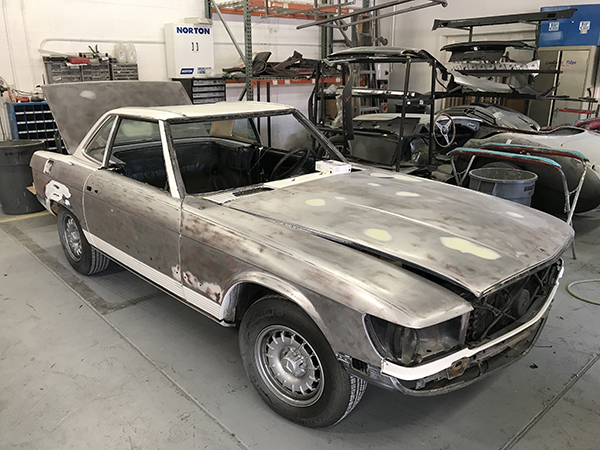The 240D and 300D series with the 4 cyl. and 5 cyl. respectively are nearly identical in their maintenance requirements. This article focuses specifically on the 240D.
Side Note: As I have mentioned several times in the past, there are so many blogs and forums that are littered with pages and pages of guessing on how to repair, check, and maintain these cars. Again, there is no guessing game involved, in fact there is really no need for this or any blog/forum if everyone would refer back to the manufacturers specifications. That said, I know it is helpful for those who are new to the classic car arena and wanting to get started on the right foot, or for those who started on the left foot and now wish to start doing it correctly.
Back to the topic at hand. As the cars age and some or many original components are still chugging along, I recommend that things be checked more frequently than prescribed as a matter of habit to avoid any unnecessary failures or destruction.
The following diagram although very rudimentary for some, is what I recommend at every oil change other than "L" which should be checked at every fill up.
These items are not in order of importance and not all are items you will be changing at every oil change, rather these are things you should take a good look at for leaks, levels, color, smell and lubrication. Always follow the specific change intervals that Mercedes recommends! Again this is for a W123 diesel.
All change intervals are per Mercedes-Benz. I personally recommend using all Mercedes-Benz fluids and filters other than motor oil. Mercedes does not recommend using synthetics in older cars. I use BlueChem additives where appropriate. Würth grease is an excellent all purpose grease for door hinges, sun roofs, throttle linkage, etc.
A: Air Filter - Make sure filter is clean and replace at max. 10K miles or 1 year. If you live in a very dry climate the filter may need to be changed more frequently. B: Fuel Filter (secondary) - Make sure there are no leaks and change every 25K miles or 3 years. C: Fuel Filter (primary) - Make sure there are no leaks and change every 25K miles or 3 years, D: Ball Joint throttle linkage - check grease at every oil change and lubricate as needed. E: Fuel Injectors - Check for leaks. I recommend using one can of BlueChem diesel common rail injector cleaner to a full tank of fuel at every oil change. F: Fuel Injection hosing - check all fuel injection hosing and clamps for tightness and leaks. G: Vacuum Connections - check for cracks in rubber connections or brittle plastic colored lines. H: Break Fluid - Check level and change every year, I: Coolant - Change at intervals of 25K miles or no longer than 3 years making sure it is full to mark with a proper mixture for your climate. J: Power Steering Fluid - Check hoses for leaks, make sure reservoir is to fill mark, check color to make sure it is not turning dark and replace at 50K miles. K: Transmission Fluid - change fluid and filter every 25K miles or 3 years and check when car has been driven at least 15 min., is in neutral (with someone in the car holding the brake) and checking the color to make sure it is not darkening. L: Oil - check at every fuel fill up and do oil change every 3K miles or 6 months. I personally use Rotella and BlueChem Oil Treatment at each change along with an M-B filter. Not Pictured: Hoses - Check at every oil change for cracks or stiffening - Replace every 50K or 5 years. Belts check for cracking. Differential Fluid - Check at every oil change and replace at 25K miles or 3 years.
Don't forget the other unseen parts that need attention as well: Fuel Tank Filter, to be checked every 50K miles unless you notice a loss of power or know you have tanked up with bad fuel. Thermostat - Change at 50K miles or 5 years. If you notice your temp gauge is creeping up higher than normal, change the thermostat.
Perhaps some at this point in the read are rolling your eyes and muttering, "that's ridiculous, I'll know when it needs replacing, it'll leak on the driveway, start smoking, and won't have any power, and that's the time to take care of it!" Well, that certainly is an option, but not if you are serious about saving money, time, frustration and the car. Good thing about the W123 diesel, if you take care of it as directed, it will purr like a kitten and last a couple of generations with no problems.
By checking and maintaining these items at each oil change, you will be hard pressed to experience any roadside difficulties and you will have a car that most will be envious of.



























